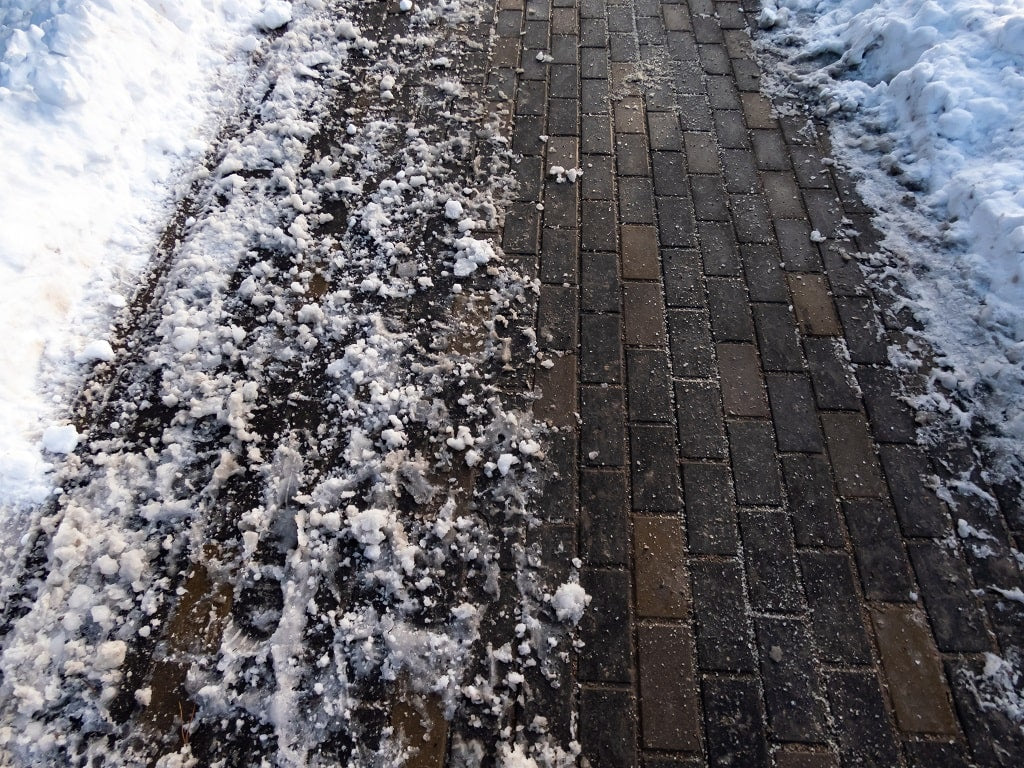Salt vs. Sand: Which Is Better For Icy Parking Lots?
Winter will soon be here again, and the cold brings along the transformative whiteness of snow coupled with the icy adventures of the season. Among the many challenges it presents, icy parking lots are a prominent issue, turning simple parking feats into daunting tasks. So, we find ourselves in an age-old winter maintenance debate: salt and sand. Today, in our friendly-toned post, we shed light on this topic and see if we can identify a clear winner. Buckle up as we dive into the snowy world of deicing and traction improvement!

The Icy Lot Predicament: Understanding The Issue
- The Protagonists: Salt And Sand
Before heading into the heart of the “salt vs. sand” debate, let’s understand the role of these two protagonists in combating icy parking lots. Salt is used primarily to melt ice, lowering the freezing point of water. Meanwhile, sand, though it doesn’t melt ice, improves traction by providing a gritty surface for tires to grip.
The Great Debate
- Understanding Salt: When we talk about melting icy parking lots, we often think of salt, or more specifically, rock salt. Salt (sodium chloride) disrupts the freezing process, effectively melting the ice to a certain temperature. It is efficient in temperatures above 15°F, which makes it a popular choice for many areas. However, it’s important to remember that salt can cause corrosion, especially to cars and infrastructure, and may cause harm to surrounding plants and wildlife.
- Unveiling Sand: On the other side, we find sand playing a significant role in parking lot safety. While it doesn’t function as a deicer, sand provides much-needed traction in icy conditions. That gritty texture can prevent cars from slipping and sliding in parking lots. Moreover, sand is environmentally friendly and won’t cause corrosion like its salty competitor. However, using sand alone won’t rid your parking lot of ice, and it might turn into a sludgy mess when the ice does melt.
Weighing Up The Pros And Cons
Both salt and sand have their strengths in the fight against winter’s icy grip on parking lots. With the keyword “salt vs. sand” echoing in our minds, the question remains: which is superior?
To answer this, consider key factors like temperature, environmental implications, effectiveness, cost, and clean-up. Remember, if temperatures are hovering around or below salt’s effective point (15°F), salt may not be much help, and sand could become beneficial Equally important is understanding the environmental impacts of salt and considering whether using an eco-friendlier alternative like sand aligns with your values.
The Verdict: Can We Declare A Winner?
In the “salt and sand” argument, rather than declaring one a clear winner, it may be more constructive to view these two as complementary tools in your winter toolbox. Salt can be the best for melting ice, while sand can offer necessary traction on a slippery parking lot. With the onset of winter, there is a growing need for salt for melting ice and snow. Sodium formate is also utilized as sidewalk salt or snow salt.

